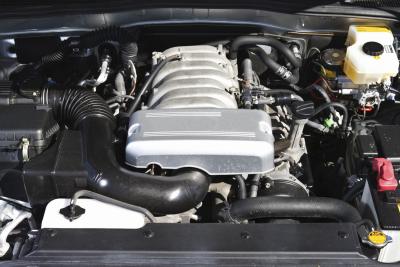
The Powerglide was Chevrolet's main automatic transmission from 1950 through the mid-1970s, A mechanically sound transmission, it was used in various General Motors cars. The transmission underwent little change, major exceptions being a switch from iron to aluminum casting and the addition of manual first and second gears. In 1962, the aluminum models were only used with the 327-cubic-inch engine; by 1963, all Powerglides were aluminum-cast. Identifying a Powerglide is a matter of locating the source code on the transmission block and decoding it to find the Powerglide's year of manufacture.
Identify early cast-iron Powerglides by locating the word "Powerglide," stamped on the passenger side of the transmission. Another identification feature is that the cast-iron models have no pan on the bottom of the transmission. The cast-aluminum Powerglides have a removable square-pan on the bottom with 14 bolts, and are stamped with a source code instead of "Powerglide."
Locate the source code on the passenger side of the transmission, just above the pan. According to Hemmings Motor News, pre-1967 codes were five or six digits long. The letter C identifies it as a Powerglide manufactured in Cleveland. The next number set identifies the date of manufacture (1115 for November 15th, etc.). The last letter identifies whether the transmission was built during the day or night shift (D or N). 1968-and-up source codes switched the code order and also gave the year manufactured. The month code was changed to a letter and the work-shift identification was dropped. A code reading T9C09 means it was built on March 9th, 1969 in Toledo.
Identifying which car model a Powerglide came from is difficult. In the earlier years of the cast-aluminum Powerglide's, it is possible to narrow the model it came with by measuring the length. According to HotRodder.com, two sizes, 25-inch and 28-inch, were manufactured between 1962 and 1964. The 25-inch model was used with full-sized cars from 1962 to 1964 and the 28-inch model on Chevy II/Novas and trucks
From 1965 on, all powerglides were 28-inch models and were virtually all the same except for gear-ratio differences for six-cylinder engines, trucks and performance engines.